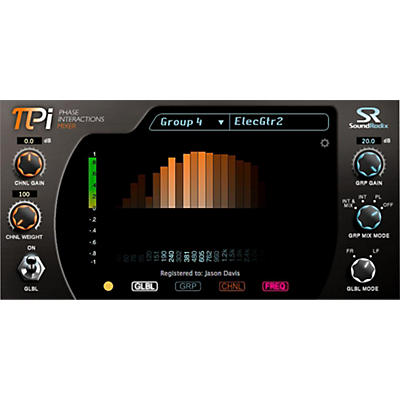

- #SOUND RADIX SURFEREQ DESCARGA FORO X64 SOFTWARE#
- #SOUND RADIX SURFEREQ DESCARGA FORO X64 CODE#
- #SOUND RADIX SURFEREQ DESCARGA FORO X64 PLUS#
- #SOUND RADIX SURFEREQ DESCARGA FORO X64 WINDOWS#
#SOUND RADIX SURFEREQ DESCARGA FORO X64 SOFTWARE#
This has several drawbacks includingĪ) left/right channel plugin parameters can not be controlled independentlyī) LADSPA plugins cannot accept parameters other than numbers which makes loading FIR filter responses somewhat uglyĬ) pulseaudio does not permit to mix/split/combine channels in an arbitrary manner like you woud need for say a 2.1 setup, not to speak of any kind of multichannel setup with say a pair of three way front speakers, 2 subs and a bunch of two way satellites.Ĭan your software do mixing/spliting/routing for all input channels to all output channels independently? Can you change parameters on the fly or do you have to restart it? Can you route audio output to channels on different pulseaudio sinks to (an example only) route highs to soundcard A and lows to soundcard B?įrom all the questions asked you probably already deducted that I'm searching for a more flexible & powerful filtering and routing engine to do the DSP stuff in the I'm the author of Pulseaudio crossover rack. Currently I'm using LADSPA plugins to insert them into the pulseaudio chain. This isn't done I'm the author of Pulseaudio crossover rack. But if you then add a FIR room correction to only the LF channels, the HF will be too early and needs a delay. I guess that in most cases a crossover will be designed in matched pairs, so there is no relative delay between the high- and lowpass filters. It would also be ok to add a simple delay to a channel to make up for a shorter FIR latency.


If there are different FIR filters for different channels, they need to be matched so they have the same latency. For longer filters a larger chunk size is needed. In this case the fir filter can be up to 1024 taps but no more.
#SOUND RADIX SURFEREQ DESCARGA FORO X64 PLUS#
This means that there will always be a delay of 1024 samples, plus a little bit more for the time the processing takes. This then applies all filtering, mixing etc before passing it on to the playback device. The capture device captures let's say 1024 frames, and then passes this chunk to the processing thread. The processing is done on chunks of audio data. The convolution is done with the overlap-add method and it's using RustFFT for fft/ifft: GitHub - awelkie/RustFFT: A mixed-radix FFT library written in pure Rust In addition there is a Python script to visualize the whole pipeline from a config file. To help with configuration CamillaDSP checks the configuration and tries to give helpful error messages when there is a problem. I run a 2048 tap stereo 2-way crossover at 44.1kHz, and this consumes less than 2% of a single cpu core on my HTPC (dual core Intel Skylake). When using Alsa for both input and output, CamillaDSP can work almost as a drop-in replacement for BruteFIR.
#SOUND RADIX SURFEREQ DESCARGA FORO X64 WINDOWS#
I have also been using the excellent tool EqualizerAPO that does all I want, but it's for Windows only. I also thought that the BruteFIR configuration is unnessecarily complicated. Secondly when BruteFIR encounters a buffer underrun it always exits with a "broken pipe" error instead of just trying again. Firstly BruteFIR only supports FIR filters, and I wanted the ability to also use BiQuad without having to make an overly complicated setup. I have been using BruteFIR for crossovers for quite some time, but there were two main things I wanted to improve upon. All calculations done with 64-bit floats.Alsa, PulseAudio, Wasapi, CoreAudio, File and stdio input/output.There is a second repository for configuration help here: GitHub - HEnquist/camilladsp-config: Help for setting up CamillaDSP, example config files etc The documentation for all published versions can be found here: CamillaDSP
#SOUND RADIX SURFEREQ DESCARGA FORO X64 CODE#
You can find the source code here: GitHub - HEnquist/camilladsp It can be used for example for building crossovers for active speakers, or for performing room correction. I would like to announce CamillaDSP, a general purpose tool for routing and filtering sound.


 0 kommentar(er)
0 kommentar(er)
